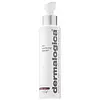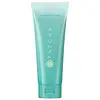What's inside
What's inside
 Key Ingredients
Key Ingredients

 Benefits
Benefits

 Concerns
Concerns

 Ingredients Side-by-side
Ingredients Side-by-side

Water
Skin ConditioningSodium C14-16 Olefin Sulfonate
CleansingLactic Acid
BufferingPPG-2 Hydroxyethyl Cocamide
EmulsifyingSodium Cocoamphoacetate
CleansingAcrylates/Dimethylaminoethyl Methacrylate Copolymer
Glycol Distearate
EmollientPropanediol
SolventHelianthus Annuus Seed Oil
EmollientAniba Rosodora Wood Oil
AstringentPelargonium Graveolens Flower Oil
MaskingEugenia Caryophyllus Leaf Oil
MaskingRosa Damascena Flower Oil
MaskingEugenia Caryophyllus Bud Oil
MaskingCitrus Limon Peel Oil
MaskingCymbopogon Schoenanthus Oil
MaskingCymbopogon Martini Oil
MaskingCupressus Sempervirens Leaf Oil
MaskingCitrus Limon Peel Extract
EmollientEucalyptus Globulus Leaf Oil
PerfumingTocopheryl Acetate
AntioxidantTocopherol
AntioxidantCI 77891
Cosmetic ColorantCocamidopropyl Hydroxysultaine
CleansingPentylene Glycol
Skin ConditioningCaprylyl Glycol
EmollientCaprylic/Capric Triglyceride
MaskingEthylhexylglycerin
Skin ConditioningTetrasodium Glutamate Diacetate
Sodium Hydroxide
BufferingCitric Acid
BufferingBenzalkonium Chloride
AntimicrobialLinalool
PerfumingEugenol
PerfumingLimonene
PerfumingCitronellol
PerfumingWater, Sodium C14-16 Olefin Sulfonate, Lactic Acid, PPG-2 Hydroxyethyl Cocamide, Sodium Cocoamphoacetate, Acrylates/Dimethylaminoethyl Methacrylate Copolymer, Glycol Distearate, Propanediol, Helianthus Annuus Seed Oil, Aniba Rosodora Wood Oil, Pelargonium Graveolens Flower Oil, Eugenia Caryophyllus Leaf Oil, Rosa Damascena Flower Oil, Eugenia Caryophyllus Bud Oil, Citrus Limon Peel Oil, Cymbopogon Schoenanthus Oil, Cymbopogon Martini Oil, Cupressus Sempervirens Leaf Oil, Citrus Limon Peel Extract, Eucalyptus Globulus Leaf Oil, Tocopheryl Acetate, Tocopherol, CI 77891, Cocamidopropyl Hydroxysultaine, Pentylene Glycol, Caprylyl Glycol, Caprylic/Capric Triglyceride, Ethylhexylglycerin, Tetrasodium Glutamate Diacetate, Sodium Hydroxide, Citric Acid, Benzalkonium Chloride, Linalool, Eugenol, Limonene, Citronellol
Water
Skin ConditioningSodium Cocoyl Glutamate
CleansingPropanediol
SolventGlycerin
HumectantAcrylates Copolymer
Coco-Betaine
CleansingCamellia Sinensis Leaf
PerfumingLuffa Cylindrica Fruit/Leaf/Stem Extract
Skin ConditioningLuffa Cylindrica Fruit
AbrasiveSodium Lauroyl Hydrolyzed Silk
Skin ConditioningRosa Multiflora Fruit Extract
MaskingBelamcanda Chinensis Root Extract
Skin ConditioningPotassium Hydroxide
BufferingSodium Chloride
MaskingPolyglyceryl-10 Dioleate
EmulsifyingPolyglyceryl-2 Sesquicaprylate
EmulsifyingButylene Glycol
HumectantEthylhexylglycerin
Skin ConditioningTetrasodium EDTA
Parfum
MaskingAlcohol
AntimicrobialPhenoxyethanol
PreservativeWater, Sodium Cocoyl Glutamate, Propanediol, Glycerin, Acrylates Copolymer, Coco-Betaine, Camellia Sinensis Leaf, Luffa Cylindrica Fruit/Leaf/Stem Extract, Luffa Cylindrica Fruit, Sodium Lauroyl Hydrolyzed Silk, Rosa Multiflora Fruit Extract, Belamcanda Chinensis Root Extract, Potassium Hydroxide, Sodium Chloride, Polyglyceryl-10 Dioleate, Polyglyceryl-2 Sesquicaprylate, Butylene Glycol, Ethylhexylglycerin, Tetrasodium EDTA, Parfum, Alcohol, Phenoxyethanol
 Reviews
Reviews

Ingredients Explained
These ingredients are found in both products.
Ingredients higher up in an ingredient list are typically present in a larger amount.
Ethylhexylglycerin (we can't pronounce this either) is commonly used as a preservative and skin softener. It is derived from glyceryl.
You might see Ethylhexylglycerin often paired with other preservatives such as phenoxyethanol. Ethylhexylglycerin has been found to increase the effectiveness of these other preservatives.
Propanediol is an all-star ingredient. It softens, hydrates, and smooths the skin.
It’s often used to:
Propanediol is not likely to cause sensitivity and considered safe to use. It is derived from corn or petroleum with a clear color and no scent.
Learn more about PropanediolWater. It's the most common cosmetic ingredient of all. You'll usually see it at the top of ingredient lists, meaning that it makes up the largest part of the product.
So why is it so popular? Water most often acts as a solvent - this means that it helps dissolve other ingredients into the formulation.
You'll also recognize water as that liquid we all need to stay alive. If you see this, drink a glass of water. Stay hydrated!
Learn more about Water